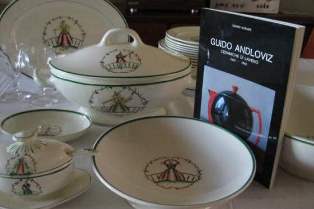
WTI Magazine #42 2014 September, 3
Author : Enrico De Iulis Translation by:
The Intesa Sanpaolo Group is a large Italian bank, among the most famous and popular in Italy, and this writer is completely unaware of anything that is even close to numbers and financial movements. But there is a part of this banking institution that has all the welcome and the consensus that can be given by an art historian: Gallerie d'Italia (Italian galleries).
It is a small group for now, but no doubt that in the future it will grow from the three historic homes of the old Italian Commercial Bank (merged precisely in the new Intesa Sanpaolo) that can accommodate as many art collections belonging to the Bank. Restoration, maintenance, preservation and display have been and are possible thanks to the Foundation which depends by the bank.
Of the three buildings in Milan, in front of the Teatro della Scala, which house the collections of the twentieth century art, we already spoke on the occasion of the article on Wunderkammer a few months ago.
The news of the month is that Palazzo Zevallos Stigliano, in the historic center of Naples, has finally reopened with a new exhibition of the worksit contains, all more organically grouped together. In the Neapolitan historic building in Via Toledo, in fact, we can find the best baroque art of the ancient Kingdom of the Two Sicilies, but we can also admire the art of the twentieth century from southern Italy, so profoundly different from that exhibited in Milan. In addition, the more pronounced intent of the Neapolitan exhibition is to define a not clear, but palpable separation between the paintings and the other masterpieces of the collection, up to the showing of the magnificent "The Martyrdom of Saint Ursula" by Caravaggio.
Even Palazzo Leoni Montanari, the seat of "Italian Galleries" in Vicenza, fifteen years after its opening returns to the public with a new organization of environments and collections.
Here are perhaps the most unique and particular items of the entire collection: there is a selection of antique vases from Magna Grecia of 552 copies, one of the largest in the world; a great and really interesting section of Venetian view paintings; a collection of Orthodox and medieval icons; and finally a unique work: "The Fall of the Rebel Angels" by Agostino Fasolato. This work, in a single block of Carrara marble, sees sixty figures twirling, bundling space, spinning around in a falling pyramid which sees at the summit St. Michael the Archangel with his sword drawn, an unmissable wonder from the 18th century.
The importance of this initiative lies not only in the grandeur and in the beauty of the collections, but also in the magnificence of the buildings that contain them: they are a testimony of architecture, lifestyle, taste, history of costume that have been preserved and made available to the public. They not only are the beauty that uplifts from the everyday squalor, but that also teaches a lot, tells us of our origins, of our past and our heritage and cultural aesthetic that in Italy will always be available to all.



